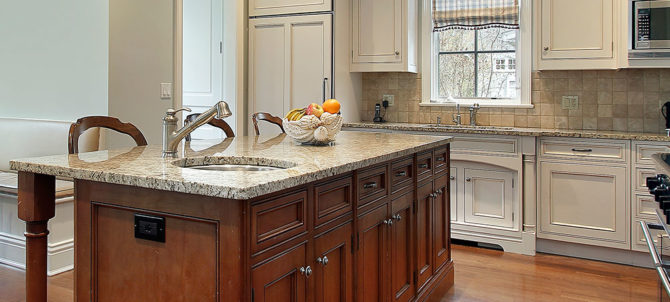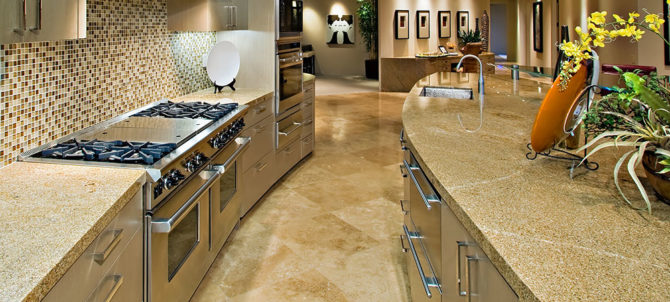
Hiring kitchen countertops installers for the first time? Here are things to look out for to hire the right ones:
Online reviews
Online reviews have become an important part of any business, and customers base their buying decisions on them.
Is the company’s reputation based on independently verifiable reviews? If so, how many do they have, does management respond to them, and how highly regarded are they?
Take a look at Google, Yelp, Facebook, and other online review sites. Read the reviews thoroughly to determine what to expect, how well the organization addressed problems, and how satisfied the consumer was.
Installing kitchen countertops is a big investment, so researching ahead of time could save you a lot of headaches later.
While hiring a company with many positive reviews, you shouldn’t go for one with a perfect score. This is because it’s rare for a company to have all the reviews positive regardless of how good they are.
While true, you shouldn’t work with a company with many negative reviews. If a company has many negative reviews, you should avoid it as it’s most likely an awful company and will give you a bad experience.
To stay on the safe side, work with a company that has at least four stars.
Price Transparency
Before you start working with any company, you should ask for price quotes. Of course, you should ask for quotes from at least five companies to compare them.
When you receive the quotes, take your time going over them. Don’t be fooled by the price alone and fall for the typical bait and switch. Some businesses will quote a lower-quality product to get you in the door, only to upsell you to a much more expensive product. You don’t want this, do you?
Companies may, for example, quote a thinner or less expensive countertop material with a standard edge to make the price appear lower. One of the things you will hear in such a scenario is the expected costs after installation.
As you can tell, you end up paying more than you planned.
To avoid this and have a better idea about the amount you should expect to pay, you should work with a company that is transparent about its price.
When asking for a quotation, don’t ask for the ballpark. Instead, ask for the price of each item.
Before you decide to work with a company, review every item they will use and confirm that they won’t increase the price later.
To protect yourself, it would be better if you have the company sign an agreement that the amount they quote will remain unchanged.
Communication
A lack of communication is one of the most common concerns about any home renovation project. Look for a company with customer support and scheduling teams to which you may turn for project updates.
When interacting with a company, ask yourself whether you will have a dedicated team to answer all your questions. If you have been trying to contact the company without success, chances are you won’t reach it when you start working together.
Many businesses are concerned with completing as many jobs as possible but don’t place communication at the top. Choose a company committed to keeping you informed about what is happening, and you can easily reach them when needed.
Besides communication, you must ensure that the company maintains the highest quality standards. The quality assurance department is the first thing you should check before working with a company.
You want a company with such a department that gives you peace of mind and will provide you with the best service possible.
Professionalism
How long has the company been in operation? Will they still be there in a year if you encounter problems on the job? What is the size of the operation?
You’d be shocked at how unskilled and small many enterprises are, frequently failing to meet demand and, as a result, delaying your installation. Choose a business with extensive experience in their field.
Ask if the measurement and installation teams are outsourced when getting an estimate. You also should ask about the technology they use during the installation.
You want a company that uses cutting-edge technology to ensure accurate measurements the first time. Nothing is more frustrating than going through the entire process only to have a poor installation with uneven seams and gaps that don’t look correct.
Protection Plan
Make sure that the company will stand behind their work. Be aware of companies that do not provide a warranty. The plan should cover everything from countertop installation to sinks, faucets, and backsplash for at least five years.
When you work with a company with a protection plan, you have peace of mind as you know they will give you excellent service.
Physical location
Can you visit a convenient location, look at kitchen ideas, and speak with a representative? There’s no substitute for seeing Quartz, Quartzite, Granite, and Marble countertops Durham in person.
Feeling the stone and observing the beautiful, unique patterns and veining is much better than seeing the stone in pictures or videos.
To better understand how your property will look once the countertops have been installed, work with a company with a physical office. This way, you can visit the location and experience the stone, which helps you make a better decision.
A wide range of services and products
Ideally, your remodel partner should provide multiple services to eliminate the need to shop around.
The last thing you want is someone that only provides one service. As much as they will do the task better, you will have to work with multiple contractors, which might be too much for you.
For example, you don’t want to hire a contractor to install the countertop stone, and they can’t install the cabinets. To be safe, work with a contractor that is all around and provides all the services in-house.
